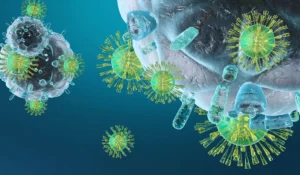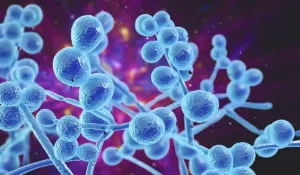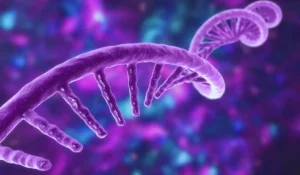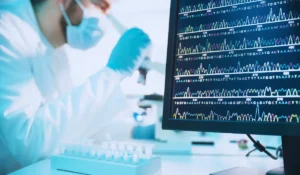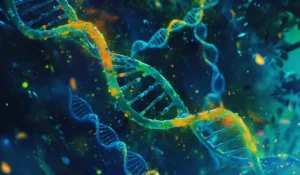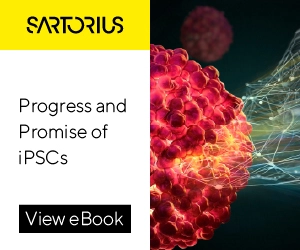What is Wiskott Aldrich Syndrome?
Wiskott-Aldrich Syndrome is also referred to as Eczema-Thrombocytopenia-Immunodeficiency syndrome. Looking at these terms one at a time, Eczema which is atopic dermatitis is marked by dried red patches that appear on the skin.
Thrombocytopenia is a deficiency of platelets in blood. Here in this syndrome, there occurs a category of thrombocytopenia called microthrombocytopenia which is characterized by few and small sized platelets. And there is immunodeficiency that is issues with the immune system resulting in recurring infections.
What causes Wiskott-Aldrich Syndrome?
In our body, all the cells in the bone marrow referred to as the hematopoietic cells make a protein called Wiskott-Aldrich syndrome protein or WASp. In addition to it, a gene named as WIPF1 gene that encodes a protein called WAS/WASL-Interacting protein family member 1, aids in stabilizing this Wiskott-Aldrich syndrome protein or WASp.
The function of WASp is it aids in restructuring the cytoskeleton of the cell and thereby influencing the overall cell shape and mobility. So, how does the cytoskeleton rearrangement result in change in cell shape and cellular movements?
It does either by adding or removing actin protein from the extremities or from the end of an actin chain, which means the actin chain can extend longer in the path where a cell wants to move by adding more and more actin protein and shortens on the side that a cell wants to move away from by removing acting protein. This mechanism aids with several cellular ventures like cellular division and phagocytosis.
Platelets mainly rely on the WASp aided cytoskeleton reorganization as they arise from huge precursor cells called Megakaryocyte which has numerous long arms like that of a squid and the cytoskeleton alters its shape in such a way that these long arms can be separated to form cellular parts referred to as platelets. These separated platelets further form clots at the injured sites of the blood vessels so that bleeding is halted.
T cells, which are a type of immune cells, also rely on the cytoskeleton mediated cell shape arrangement for their proper functions. Typically, when T-cells encounter a pathogen, they form pseudopods or false legs which hold out and synapse with other cells to exchange information to kill the pathogen
When T-helper cells and antigen presenting cells form an immunological synapse, Helper T cells are activated and further they activate B cells that produce antibodies helping to destroy the pathogen.
Besides, Cytotoxic T-cells and Natural Killer cells also restructure their cytoskeleton to form an immunological synapse with several body cells to supervise if they are healthy, infected or cancerous. What happens if an unhealthy cell is detected is, immune cells drive that particular unhealthy cell to undergo apoptosis or programmed cell death.
Jointly, T cells, B cells and Natural Killer cells save our body from pathogens as well as from cancer.
Also, there are T cells like regulatory T cells or T-regs that downregulate the other T cells to restrict immune response and block autoimmune conditions to occur. T-regs also depend on reorganizing the cytoskeleton so that they can function properly.
Lastly, there are these phagocytic cells such as monocytes, macrophages and dendritic cells that form tiny foot processes by reorganizing the cytoskeleton to pick their way towards cytokines released by bacteria. When reaching the desired site, they do phagocytosis by swallowing the debris, dead cells and bacteria so that it can be processed and destroyed.
A gene mutation in the Wiskott-Aldrich protein gene produces a dysfunctional protein. This syndrome is an X-linked recessive disorder wherein males are majorly affected than females.
The condition is not inherited at times, but arises from a spontaneous DNA mutation in Wiskott-Aldrich syndrome gene. A minute mutation results in X-linked thrombocytopenia which is a mild condition, while a large mutation results in either minimal or no protein at all, leading to Wiskott-Aldrich Syndrome.
Besides, there is Wiskott-Aldrich Syndrome type 2 that is caused by WIPF1 gene mutation. And this syndrome is somewhat similar to Wiskott-Aldrich Syndrome.
When mutation occurs, several cells are affected as Wiskott-Aldrich protein influences the cytoskeleton rearrangement in many hematopoietic cells. Megakaryocytes’ ability to form platelets will be low and the formed platelets will be small and fragile resulting in microthrombocytopenia.
Due to this, excessive bleeding occurs as the person affected does not have normal clots. Immune response is impaired as helper T-cells and B cells will not be able to form an immunological synapse. Also, for unclear grounds, all these result in increased IgA and IgE antibodies and a decreased or a normal IgM and IgG antibody levels.
Furthermore, our ability to defend against pathogens and cancers are impaired as T-cells and Natural Killer cells cannot form normal immunological synapses. Regulatory T cells are also blocked from doing their task which makes autoimmune diseases to occur. Finally, phagocytic cells wrestle to move around, making it really difficult for them to clean up the debris.
What are the symptoms of Wiskott-Aldrich Syndrome?
The standard triad of symptoms are bruising & bleeding, eczema and recurrent infections. The infections are typically due to encapsulated bacterias such as Streptococcus pneumoniae, Haemophilus influenzae and Neisseria meningitidis; fungi such as Pneumocystis jiroveci and Candida albicans; viruses such as Molluscum contagiosum, Varicella zoster and cytomegalovirus.
People affected with Wiskott-Aldrich Syndrome are also sensitive to developing autoimmune conditions like idiopathic thrombocytopenic purpura, and cancers like leukemia and lymphoma.
How is Wiskott-Aldrich syndrome diagnosed?
Diagnosis is generally suspected on the basis of the triad of symptoms.
The initial step is a peripheral smear which could indicate thrombocytopenia with limited platelets. Flow cytometry can be performed to know if there is production of mutated Wiskott-Aldrich syndrome protein. However, it might not be possible to identify severely mutated proteins.
Then the diagnosis is confirmed by genetic sequence analysis of the Wiskott-Aldrich gene.
What is the treatment for Wiskott-Aldrich syndrome?
Therapeutic management is majorly aimed at symptoms and it includes prophylactic antibiotics, regular intravenous immune globulin infusions, platelet transfusions in case of severe bleeding, and surgery for spleen removal which aids to maintain platelet counts within the blood.
Sometimes, immunosuppressive therapy is required for the treatment of autoimmune conditions. Also, hematopoietic stem cell transplantation is a likely curative treatment which is often used.
Quick summary
Wiskott-Aldrich syndrome is an immune system disorder which is inherited in an X-linked recessive way and it most often affects men.
The standard triad of symptoms are microthrombocytopenia, repeated infections and eczema.
The syndrome is caused by a mutation of Wiskott-Aldrich syndrome protein that is made by all hematopoietic cells.
The treatment is concentrated on controlling symptoms and the likely curative treatment now is hematopoietic stem cell transplantation.
Reference
Encyclopedia of Molecular Mechanisms of Disease by Florian Lang
Encyclopedia of Molecular Biology by Thomas E. Creighton
Rare Diseases: Integrative PPPM Approach as the Medicine of the Future from Springer

